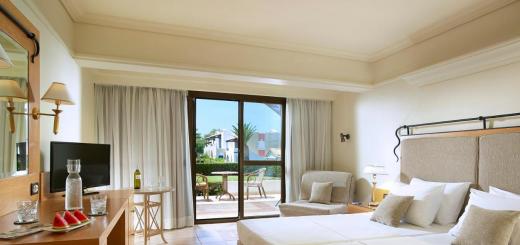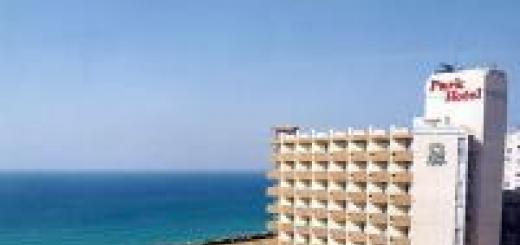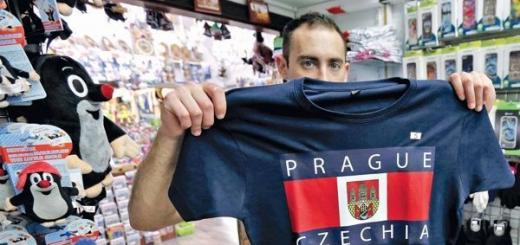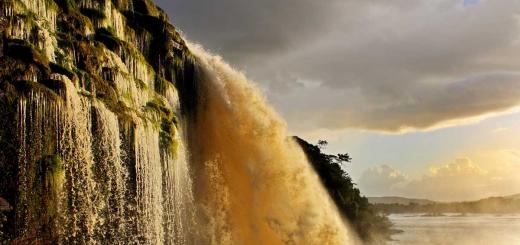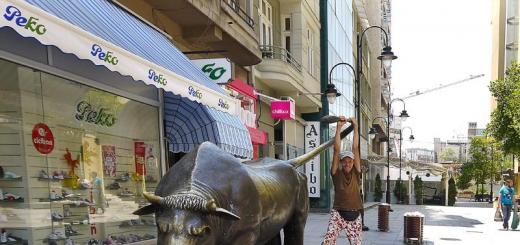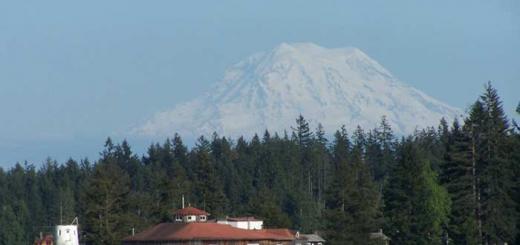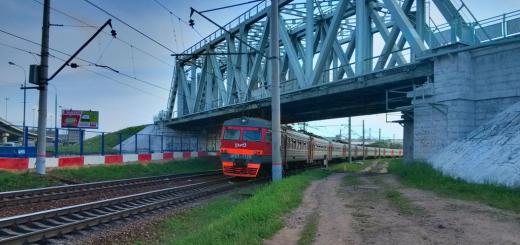Once, absolutely spontaneously, a friend suggested that I go to Tver for one day. I agreed, because you can get to this city from Moscow very quickly by high-speed train, and there is a lot to see in Tver. Under Catherine the Great, all Old city practically burned out, and the empress instructed the architect P. Nikitin to rebuild the city according to a new regular plan, already in stone. The most famous architects of that time worked in Tver, so its appearance still reminds of St. Petersburg. Preserved graceful stone mansions, avenues with squares and cobbled embankments. Catherine II considered Tver the second most beautiful after the capital. We were already in this city ten years ago on an excursion trip, from which there are almost no memories. I remember only the wide Volga and the monument to Afanasy Nikitin. This time we decided to thoroughly explore the city. They piled up a bunch of plans for one day, but, unfortunately, not everything worked out, there was not enough time.
Attractions of Tver
To Tver by train "Swallow"
So, we decided to go on the high-speed train Swallow. Tickets for it are not sold on the Internet, so the day before they bought them at the Leningradsky railway station. The cost of a full ticket to Tver is 480 rubles one way. At the same time, the place does not stand out, so everyone sits down as they have to. We ran into the train almost before departure, managed to get in, but there were quite a lot of people, after all, Saturday morning is summer residents' time. High-speed to Tver the train is on hour and a half.
Since we arrived quite early, we decided to have breakfast at McDonalds, which is located in mall"Pyramid" opposite railway station in Tver. Then along Tchaikovsky Avenue we went to the embankment. On the way, we saw a monument to Cyril and Methodius at the philological faculty of the local university and some interesting graffiti.

Monuments of Tver
As for the rest, Tchaikovsky Avenue is an unremarkable street, of which there are many in any regional center.
Walking route in Tver: sights of the city
Map of the walking route in Tver
After some time we went out to the pedestrian Trekhsvyatskaya street.

Streets of Tver
This is a kind of local Arbat with many cozy cafes, shops, souvenir shops.

Streets of Tver
The owners of many establishments decorate them in a European manner, even street musicians play Parisian waltzes.

Streets of Tver
Here the beauty of this city began to open before us.

Streets of Tver
On Trekhsvyatskaya Street we see a monument to the great singer S.Ya. Lemeshev, who was born in the Tver region. Last year I was in a museum in his small homeland, now I saw a monument in Tver, which was erected in 2007 for the 105th anniversary of the singer's birth.

Streets of Tver
I talked about the Lemeshev Museum earlier
Near the monument to Lemeshev is the Kalinin bar. This is how the city of Tver was called in Soviet times.

Streets of Tver
In the alley, we came across a very beautiful graffiti. As I later found out, this street art is very popular in the city, and even festivals are organized here for artists who specialize in this technique.

Streets of Tver
Before moving on, we turned onto Zhigareva Street and visited the unique Goat Museum. It's very small, but pretty funny. There we learned the story of why the goat is the unofficial symbol of Tver. I will tell you about the visit to this museum separately.
-> Will you answer for the goat? Review of the goat museum.

Goat museum
We go to central square Lenin.

Attractions of Tver
Years go by, but Lenin does not disappear from the streets and squares of Russian cities.

Attractions of Tver
The main buildings here are four historical buildings dating back to the 18th century. All of them are architectural monuments of federal significance. Of course, during the Great Responsible War, these buildings were badly damaged, but they were restored, and now important state and cultural institutions are located there: the administration of Tver and the City Duma, the Theater of the Young Spectator and the Main Regional Directorate of the Bank of Russia. The area is very beautiful, all in flowers, there are benches for rest.

Attractions of Tver
It is crossed by Sovetskaya Street, along which we went to Sovetskaya Square. On the way, we admired the beautiful mansions. After the fire of 1763, which destroyed the entire central part of the city, a million rubles were allocated for the construction of this street, so the name was given to it Millionnaya.

Attractions of Tver
On Sovetskaya Square, we see a monument to Prince Mikhail Yaroslavovich of Tverskoy, who was the first in the history of the Russian state to be called an autocrat, and under whom the principality reached its heyday.

Attractions of Tver
He lived at the turn of the XIII-XIV centuries and fought for the Grand Ducal throne with the Moscow prince Yuri Danilovich. The latter became related to the Horde khan, turned him against Mikhail Yaroslavovich, and their people killed the Tver prince after long torture, and then for another year they were not allowed to bury his body. Later, Mikhail Yaroslavovich was canonized and began to be considered the heavenly patron of Tver.
We turn from Sovetskaya Square to Rybatskaya Street and go to the M.E. Saltykov-Shchedrin, who served as vice-governor in Tver for several years. The staff of this museum is somehow very passive towards tourists, and if you don't know anything about the writer, it will be completely uninteresting. Even taking into account the fact that we bought a full ticket, they did not want to tell us anything about the museum's exposition. We left there a little disappointed.
-> Review of the Saltykov-Shchedrin Museum in Tver

Attractions of Tver
Then we headed to the Stepan Razin embankment - very picturesque place, with beautiful views to the opposite bank with the St. Catherine Monastery and the river station.

Attractions of Tver

Attractions of Tver

Attractions of Tver
Along the embankment, we see a number of 18th century mansions.

Attractions of Tver
Moreover, it is interesting that at first there are houses with gates, a garden and their own territory. And then, closer to the City Garden and the Novovolzhsky Bridge, the mansions are close to each other.

Attractions of Tver
The fact is that the capital's architecture had a tremendous influence on the appearance of Tver in the 18th century.

Attractions of Tver
In St. Petersburg, houses with common facades have also survived, but in Tver such mansions were not to the taste of all merchants, and many of them continued to build houses with a garden and a small courtyard.
We cross the Novovolzhsky bridge to the other side of the Volga and go to the River station.

Attractions of Tver

Attractions of Tver
The grandiose building in the style of Stalinist neoclassicism was built in 1938 and accommodated a huge number of passengers.

Attractions of Tver
At present, his terrible state is striking, even if everything will collapse, the galleries are polluted with garbage and the newlyweds are immediately photographed amid all this chaos.

Attractions of Tver
Passenger river transportation has long been turned off (and now the whole of central Russia is buried in traffic jams), and the station building is empty and collapsing.

Attractions of Tver
Only excursion ships, including quite large ones, are welcomed at the pier.
Review of a boat trip in Tver

Attractions of Tver
Behind the River Station we see the Cathedral of the Dormition of the Most Holy Theotokos - the only thing that remains of the Otroch Dormition Monastery, destroyed in Soviet times.


Attractions of Tver

Attractions of Tver
Behind it we see the temple of the Three Confessors and beautiful old mansions.

Attractions of Tver
Then we decided that it was time to have lunch. On the embankment next to the monument to Afanasy Nikitin we see the Panorama restaurant and go there.

Attractions of Tver
We were seated on an open veranda. It turned out to be a Georgian restaurant. Prices are at the Moscow level. The food is very tasty, the interior is beautiful and the service is excellent. After lunch we return to the other side along the Old Volga Bridge.

Attractions of Tver
The first thing we see is a beautiful mansion with an extensive park, fenced off. This is the Travel Palace, which is now closed for restoration. It is planned to open it in the fall of 2016. Therefore, it is worth returning to Tver. An art gallery will be placed inside, and the restored interiors, I think, are worth seeing.


Attractions of Tver
Opposite is the City Garden with many attractions. We decided to take a ride on the Ferris Wheel and look at the city from above. When they came closer they saw that it was all shabby and did not inspire confidence.

Attractions of Tver
Then we realized that soon the return train and went in the direction of the station. We left the City Garden near the very beautiful Stalinist building of the Drama Theater and headed back along the already familiar route.

Attractions of Tver
This time Tver was really remembered for its graceful historical mansions and streets, in places similar to those in St. Petersburg. It is unrealistic to see all the interesting objects in Tver in one day, so we have bypassed only the most popular sights that can be covered in a day trip.
Hotels in Tver
10:23 pm - A short illustrated guide to Tverskaya and Tverskaya-Yamskaya for March 26Photos: Norwegian Forest
On March 26, at 2:00 pm, a wide anti-corruption festivities are to take place in Moscow along Tverskaya and Tverskaya-Yamskaya streets: politician and self-proclaimed presidential candidate Alexei Navalny urged citizens to stroll through the center of the capital to express their "Bueee!" to the current Prime Minister of the country Dmitry Medvedev (who, according to Navalny, is mired in corruption, sneakers and vineyards).
The Moscow authorities refused to agree on an application for the march along Tverskaya, but did not offer an alternative route. Navalny, relying on the decision of the Constitutional Court, believes that this automatically makes the event permitted. In addition, he promises to everyone who will be detained tomorrow in the center of Moscow not only his moral support, but also legal protection - up to the condemnation of compensation in the European Court of Human Rights.
Navalny offers to walk along the streets of Tverskaya and Tverskaya-Yamskaya. Tverskaya begins from Manezhnaya Square, Tverskaya-Yamskaya ends at Belorussky railway station. Total length these two streets are approximately 2.5 kilometers long. Exits from four metro stations are located on these streets: Okhotny Ryad (Teatralnaya, Ploschad Revolyutsii), Tverskaya (Pushkinskaya, Chekhovskaya), Ploschad Mayakovsky and Belorusskaya. Navalny suggests joining festivities at any point on the route, move in any direction, and if unpleasant obstacles arise, act according to the circumstances.
On March 25, the friendly editorial staff of our personal blog together with the Moscow expert, the creator of the "Walks in Moscow" project, Alexander Usoltsev ( usolt ) walked the entire route (first from Manezhnaya Square to Belorussky Station, and then from Belorussian Station to Manezhnaya Square), photographed interesting attractions along the way and prepared a short guide to Tverskaya and Tverskaya-Yamskaya for March 26.
We hope you find it useful tomorrow.
Don't thank.
Yes, and do not forget to study the useful instructions: "How to behave at rallies and during detention."
BRIEF ILLUSTRATED GUIDE TO TVERSKAYA AND TVERSKAYA-YAMSKAYA
1. Manezhnaya Square. Exit from the Okhotny Ryad metro station. Tverskaya, 1.
usolt : Before the Stalinist reconstruction of the second half of the 1930s, Tverskaya began not at the National Hotel, but at the Resurrection Gate, from the very entrance to Red Square. The entire huge space of Manezhnaya Square was occupied by one quarter of the city 100 years ago.
2. Central Telegraph. Tverskaya, 7.
usolt
: On the roof of the Central Telegraph building there is a bell on a tripod beating the clock. It beats every hour, but you can hardly hear it. The bell is old, made by the Samginh Bell Factory - one of the most famous factory in Russia, located in the Kalanchevka area. Obviously removed from some closed or demolished church.
3. Tverskaya, 11.
usolt
: The first two floors of houses 9 and 11 along Tverskaya are faced with a large granite stone. Legend has it that this stone was brought to the USSR from Germany in 1941: from it Hitler wanted to erect a monument to his victory, but in the same year the stone was recaptured by the Red Army, and after the war it was used to decorate houses on the main street of the capital.
4. Moscow City Hall. Tverskaya, 13.
usolt
: Even the Kremlin periodically left power. And in the red building on Tverskaya, as at the end of the 18th century, the house of the governor-general was built, this is how power sits here. Only the names changed - in Soviet times it was the Moscow City Council, and today it is the mayor's office of Moscow. In 1939, during the reconstruction of the street, the building was moved 13 meters deep into the street, and in 1946 two floors were added.
5. Shop "Armenia". Tverskaya, 17.
usolt
: Many people call this building a house with a shop "Armenia", but experienced old-timers will certainly object and say that this is "House under the skirt": the corner turret was crowned with a statue of a ballerina with a sickle in Stalin's time.
6. Novopushkinsky Square, McDonald's.
usolt
: The very first McDonald's, opened in 1990 during the Soviet era, carefully preserves an amusing artifact of the era when prices were often quoted in USD. (conventional units, equal to the dollar at the rate of the Central Bank) - the sign "The restaurant serves for rubles."
7. Museum of Contemporary History of Russia. Tverskaya, 21.
usolt
: In the courtyard of the former English Club, and now the State Central Museum of Contemporary History of Russia, you can see a witness to the October battles of 1917 - a tram pole pierced by a shell. No insult to the feelings of urbanists: just battles with the cadets who took the oath of the Provisional Government.
8. Noor Bar. Tverskaya, 23/12.
usolt
: In the basement of Noor Bar you can see one of the powerful beams used to move buildings on Tverskaya during the Stalinist reconstruction.
9. Tverskaya, 25
usolt
: House 25 on Tverskaya was built for the employees of the People's Commissariat of Forest and was decorated with sgraffito on a forest theme.
10. Triumfalnaya Square. Monument to Mayakovsky.
usolt
: Before the installation of the monument to Mayakovsky, several of his silhouettes were made of plywood: they were moved around the square from place to place for a long time in order to find the ideal position.
11. Metro station "Belorusskaya".
usolt
: Do not be surprised and do not be alarmed by the cries of birds of prey at the exit from the Belorusskaya metro station. This is an innovative development of the underground: screams scare away pigeons, spoiling "architectural excesses".
12. Courtyards in the vicinity of the Belorussky railway station.
usolt
: In the courtyards, sometimes you come across the most amazing artifacts. For example, this is the fastest way to get to Leningrad.
13. Tverskaya Zastava Square.
usolt
: The former settlement of coachmen and today constantly stands in traffic jams from carts of "Vaneks" and reckless drivers.
14. Church of St. Nicholas the Wonderworker of the Tver Old Believer community.
usolt
: A sculpture workshop was located in the Old Believers Church of St. Nicholas the Wonderworker in Soviet times. A monument to Yuri Dolgoruky was made in it, which now stands in front of the mayor's office. You can buy delicious gooseberry, strawberry, plum and other pastries in the church tent.
15. Shop "Alenka". 1st Tverskaya-Yamskaya, 12.
usolt
: In the Alenka brand store you can buy Stolichny sweets: firstly, they are delicious and contain a little alcohol; secondly, they depict a skyscraper on Kotelnicheskaya embankment with Shuvalov's apartment.
16. 1st Tverskaya-Yamskaya, 2s2.
usolt : Have you ever noticed that the monument to Pushkin is pre-revolutionary, and the poems on it are already in the new spelling? The tsarist censorship did not miss the stanza "That in my cruel age I glorified freedom", and until 1937 another quote flaunted on the monument in an alteration by Zhukovsky:
And for a long time I will be nice to the people,In 1937 (100 years since the death of Pushkin), it was decided that the tsarist censorship had to be eliminated, and the tablets were changed.
That I awakened good feelings with my lyre,
That I was useful with the beauty of living poetry
And he called for mercy to the fallen.
19. Tverskaya Square. Monument to Yuri Dolgoruky.
usolt
: When the monument was being made in the late 1940s, no one even roughly knew what Yuri Dolgoruky looked like (his remains were found a little later), so the sculptor Sergei Orlov was guided solely by his imagination, made a collective image of a Russian hero on a dashing horse and passed him off as the grand duke. And, most importantly, it's hard to find fault.
20. Tverskaya, 6.
usolt
: House 6s1 on Tverskaya is not as simple as it seems. In appearance, a typical Stalinist house is a complex "nesting doll": a building of the 18th century was "put on" on the chambers of the 17th century, and in the 19th century all this was rebuilt into the Hotel Dresden. And already in Stalin's time, a Stalinist facade was pulled over the hotel "Dresden". Remnants of the 17th century wall can still be seen in the courtyard.
Look for and compose the optimal public transport routes for you FROM your location and TO the desired street or house, as well as car, bicycle and hiking trails for walking.
Choose transport:
Public transport By car Bicycle On foot
Show route on map
Route on the city map.
Are you asking how you can get there or how to get to a certain street or house in Tver? The answer is very simple, find your best route around the city using the travel planner on our website site. Our service will find for you up to 3 options for travel in the city of Tver FROM your address and TO the destination point. On the route map, click the more button (the start icon) and go to a detailed description of the travel options. For all routes, travel time will be shown, taking into account traffic jams, numbers of buses, minibuses and other public transport.
Popular routes:
- FROM: Tver, Zatverechye settlement, Academician Tupolev Street, 124B - TO: Tver, Pobedy Avenue, 3;
- OT: Tver, Komsomolskaya square- BEFORE: Tver, Tverskoy prospect;
- FROM: Tver, Lunacharskogo street, 22 - TO: Tver, Artyukhina street, 13k2;
- FROM: Tver, river station - TO: Tver, Gorky street, 63;
- FROM: Tver, Shishkov street - TO: Tver, Dmitry Donskoy street, 35A;
Users of our site often ask, for example: "How to get from the bus station to the hospital?" etc. We decided to make it easier to find the optimal route for everyone in need.
Driving along a predetermined route is a way to eliminate problems that may arise in unfamiliar terrain, and to overcome the desired section of the road as quickly as possible. Do not miss the details, check the direction of movement on the road and turns on the map in advance.
With the travel planning service, you just need to enter the beginning and end of the route, then click the "Show route on the map" button and you will receive several route options. Choose the most suitable one and start driving. There are four modes of route planning - on city by public transport(including route taxis), by car, bike or on foot.
Tverskaya Street is one of the main tourist routes Moscow. Taking into account the nearby lanes and monuments on both sides of the street, the route becomes extended. Therefore, we present a walk along Tverskaya with a description of two interconnected routes: on one side of Tverskaya from the Kremlin to Triumfalnaya Square and on the other - back to the Kremlin. These routes can be completed in one go, and you can - in two times.
These attractions are detailed in Walk along Red Square and Manezhnaya Square ... And today we are going in the opposite direction. From here, from the intersection with the streets Okhotny Ryad and Mokhovaya Tverskaya street originates.
Before moving on, a little history: since the XIV century, a road from the Kremlin leading to Tver passed here, hence the name of the street. In the XVIII-XIX centuries, Tverskaya Street was the main street of the city, it was very prestigious and expensive to live on it, so the houses on it belonged either to very rich people or to persons close to the imperial family. The most the best hotels and shops of the city. The royal corteges from St. Petersburg entered the city along it, so several Triumphal Gates were erected on the street.
In the 1930s, Tverskaya Street, united with 1st Tverskaya-Yamskaya and renamed Gorky Street, underwent global transformations. Not only were destroyed Orthodox churches (there were five of them on the street), but also the Triumphal Arches, and many other buildings, which are priceless monuments of architecture. Therefore, most of the houses on Tverskaya Street, with rare exceptions, were built already in the twentieth century. The historical name was returned to the street in 1990.
So we begin.
A huge gray building, which begins Tverskaya Street, house number 2, aka house number 1 on Okhotny Ryad Street - the building of the State Duma.
On the opposite side of the street we see the National Hotel (house # 1).
The hotel has existed here since the 18th century, while the modern building was built in the early 1900s. Interesting fact: exactly, while living in this hotel, the artist Andrey Ioganson developed the design of the famous Stolichnaya vodka label. It depicts the hotel "Moscow", dismantled in 2004, exactly from the perspective that opened from the windows of the "National".
Next to the National is the building of another hotel, the Ritz-Carlton Moscow.
The building belongs to international network hotels "Ritz-Carlton", built in 2007, on the site of the demolished building of the hotel "Intourist".
After walking along Tverskaya street to house no. 4, we turn into an arch. This is Georgievsky Lane.
On the right side is the rear facade of the State Duma building with a service entrance.
We return to Tverskaya street and follow on.
Again we turn our gaze to the opposite side of the street. House number 5 - a three-story turquoise building - Theater. M.L. Ermolova. An architectural monument of the 19th century. Built in the 1830s. Until the end of the 19th century, the house was two-story, in 1897 the merchant Postnikov, having bought it from the previous owners, built on the third floor.
The building was built in 1925. The announcer booths of the All-Union Radio were located here, from here the voice of Y. Levitan sounded for the first time, informing Muscovites about the beginning of the Great Patriotic War.
The next turn to the right is Kamergersky Lane. In the late 18th - early 19th centuries V.I. Streshnev, S.M. Golitsyn and P.P. Beketov, all three bore the title of court chamberlains. Hence the name of the lane. The plaque on the house number 2 reminds us of this. There are 3 more commemorative plaques on it, they tell us about the famous inhabitants of this house. Here lived poets of the 20th century Mikhail Svetlov and Nikolai Aseev, and the writer Lydia Seifulina.
The Russian Academy of Painting, Sculpture and Architecture of Ilya Glazunov is located in the house number 4 on Kamergersky lane.
You can watch the work of some of the masters and their students right on the street.
But, of course, the main building of Kamergersky lane is house # 3. The three-story mansion, an architectural monument of the late 18th century, houses one of the main theaters in Moscow - the Moscow Art Theater (MHT) named after A.P. Chekhov.
Two neighboring buildings, house no. 5 and house no. 1, also belong to the theater. House No. 1 houses the Moscow Art Theater Museum, the Educational Theater and an additional stage, on which, as a rule, graduates of the Educational Tetra give their graduation performances.
On the opposite side of the alley, next to the Ilya Glazunov Academy, there is a monument to Anton Pavlovich Chekhov, the famous Russian writer whose name the theater bears.
House No. 6 of Kamergersky Lane houses the S.S. Prokofiev. The great composer lived in this house for seven years.
On the neighboring building (house no. 5), which houses the store "House of Pedagogical Books", we see a memorial plaque dedicated to another famous resident of Kamergersky Lane - Lev Kassil, author of "Conduit and Shfambrania" and other children's works.
We return to Tverskaya street. Houses №4 and №6, as well as house №9, which is located on the opposite side, are not architectural monuments, but they are also worth paying attention to. They are faced with black granite and look quite powerful and monumental. As, however, and most of the houses erected in the Stalinist era - with its power, post-war architecture, as it were, reflected the power of the Country - the Winner.
There is even a version that the granite with which the houses on Tverskaya were laid was brought to the Soviet Union by German troops. From it, Hitler, after the victory, was going to erect a Monument to the Third Reich on the ruins of the defeated Union. However, perhaps this is just a legend.
At the beginning of house no. 6 we see a plaque informing us that P.V. lived in this house. Vasiliev, Soviet portrait painter, Stalin Prize laureate, author of many famous portraits of V.I. Lenin and I.V. Stalin.
Then we turn into the arch of the house number 6, into Kozitsky lane. The building located in it is a courtyard of the former Savitsky Monastery, an architectural monument of the early twentieth century.
Returning to Tverskaya Street, we continue walking along the house number 6 (it is quite long). Immediately after leaving the arch, we see a memorial plaque.
Every child knows the name of the person to whom it is dedicated. Korney Chukovsky (real name Nikolai Koreneichukov), author of immortal children's poems about Aibolit and Barmaley, Mukhu-Tsokotukha, Moidodyr, Bibigon and others fairytale characters, whose names have become household names forever.
And at the end of the house we see the courageous profile of Boris Livanov, theater and film actor, laureate of five Stalin Prizes, People's Artist of the USSR, father of Vasily Livanov - performer of the famous role of Sherlock Holmes.
The Moscow City Hall is located in a five-story mansion, an architectural monument of the XIIXth century. The building was built in 1782 and belonged to Count Z.G. Chernyshev, the governor-general of the city. After the ruler of the city was replaced, the house was bought from its owner by the imperial treasury and became the official residence of the Moscow governor-generals. In this status, he existed until the October Revolution. Since 1917, the Mossovet was located here. And after the fall of the socialist system, the building was occupied by the Moscow City Hall, which is located here to this day.
An interesting fact: the original building of the 18th century was three-story, and the colors were not red and white, but white and orange .. The two upper floors were built on after the Great Patriotic War, in 1946, next to taller buildings.
Behind the square, a small square with benches and a fountain opens up to our eyes.
At the end of the park there is the building of the Russian State Archive of Social and Political History (RGASPI) and a small monument to Lenin.
Also from Tverskaya Square we see the Church of Saints Kosma and Damian, located in Stoleshnikov Lane.
This church is one of the few buildings of the 18th century that survived during the global reconstruction of Tverskaya Street. This, at first glance, is very amazing fact, since even ordinary houses that had nothing to do with Orthodoxy were dismantled or demolished, but the church, despite the militant atheism propagated by the Soviet regime, survived. But there is an explanation for that. If we come closer to the temple, we will see a commemorative plaque on which we can read that since 1929 the All-Union State Library of Foreign Literature named after M.I. Rudomino. This is the only reason why the temple was left alone. As the sign says - "The Book saved the Temple."
Another attraction of Tverskaya Square, the Kozhins' Estate, an architectural monument of the 18th - early 19th centuries, is also located in Stoleshnikov Lane. However, the building is in a very poor condition.
On the other side of the square is Tverskoy passage. The house, located at the intersection of the passage and Tverskaya Street, is literally hung with memorial plaques dedicated to its residents. Six of them are located on the side of Tverskoy passage.
To the hero of the Soviet Union, participant of the Second World War, in the post-war years - to the Minister of the Gas Industry of the USSR A.K. Kortunov.
Outstanding power engineer, Hero of Socialist Labor V.D. Kalmykov.
People's Artist of the USSR D.A. Nalbandyan.
The outstanding film director M.I. Romm.
Composer and conductor V.G. Zakharov.
Diplomat, historian and publicist I.M. Maisky.
Five more boards - from the front side of the building, from Tverskaya Street.
The writer and translator I.G. Ehrenburg.
The military leader, marshal of armored forces, Hero of the Soviet Union P.A. Rotmistrov.
People's Artist of the USSR N.P. Khmelev.
People's Artist of the USSR V.Ya. Stanitsyn.
The Soviet writer V.Ya. Shishkov.
But at the end of house no. 12 it is worth stopping. A plaque on the wall informs us that the famous Russian artist, singer and composer Alexander Vertinsky lived in this house.
Today in one of the entrances of this house is the Union of Philatelists of Russia.
Let's go further. House No. 14 is another house of the 18th century, rare for Tverskaya Street, the main house of the estate of V.I. Kozitskaya. In the 19th century, the Literary Salon was located here, which was visited by Pushkin, Zhukovsky and many other poets.
In 1898, the millionaire merchant Grigory Eliseev bought the house from the previous owners, and three years later, in 1901, he opened a luxurious store called Eliseev's House. The assortment of the store amazed even the most discerning Muscovites with its wealth. Truffles, oysters and many other dishes, which were previously imported to Russia only by order, appeared here for the first time; it was impossible to buy them with free sale.
The Eliseevsky store is open to this day. Its current owners even carried out a global reconstruction of the interior in 2003, and the store began to resemble the old one - from the times of pre-revolutionary Russia.
And at the entrance to the store, a bust of G.G. Eliseev.
In the same building, a store is adjacent to an institution of a completely different kind. This is the Museum - Humanitarian Center "Overcoming" named after Nikolai Ostrovsky. In this house, the writer spent Last year own life.
As you know, Ostrovsky, for the last 9 years of his life, was bedridden, and all these years he did not stop working, writing his works. Therefore, it was here, in close cooperation with the museum named after him, that the “Overcoming” Humanitarian Center was opened, the purpose of which is to help people with disabilities... Especially those who, like Ostrovsky, despite an incurable disease, are engaged in creativity.
Separately, it should be said that in the area of the square under Tverskaya Street there is a transport hub of the Moscow metro, consisting of the stations "Pushkinskaya", "Tverskaya" and "Chekhovskaya". These stations in themselves are also a kind of architectural monuments.
The design of "Pushkinskaya", in accordance with its name, is dedicated to the work of the great poet. On the track walls there are metal panels with quotes from his most famous works and with images of places dear to Pushkin - Moscow, Mikhailovsky, etc. In the passage to the Chekhovskaya station, there is a bust of Pushkin himself.
The Chekhovskaya station is also made in a literary style. And although we will not see direct references to the writer's work (as it was done at Pushkinskaya) here, it is not difficult to guess fragments of some Chekhov's works in the mosaics that adorn the entire station lobby.
A monument to Maxim Gorky was erected in the passage from Chekhovskaya to Tverskaya. After all, "Tverskaya" received its current name only in 1992, and before that it was called "Gorkovskaya" (since Tverskaya street in the Soviet years was renamed into Gorky street)
And opposite it, another architectural monument of the 18th century - the House of the Dolgorukov-Bobrinsky, A.S. Pushkin has repeatedly been here, as we are informed by a memorial plaque on the facade of the house.
We return back to Tverskaya street. Having passed several houses of modern construction, which are not of particular interest to us, we turn into the next lane - Nastasinsky.
There is another cinema here - "Kinomir".
As well as an interesting building made of gray-green bricks from an architectural point of view. The house was built at the beginning of the 20th century, but the style resembles the mansions of the 18th - 19th centuries. The Loan Treasury has been located here since 1916.
Today, the Central Bank's Vault is located here, however, we will not see any signs, any signs indicating this. This is logical - why once again draw attention to such places?
We return to Tverskaya street. The houses next to Pushkinskaya Square are home to many different shops of famous brands. If you want to have a bite to eat during the walk (and we just came, approximately, to the middle of it), you can visit the restaurant "Grabli", located in building 18, building 1 - a reasonable ratio of price and quality.

On the other side of the street, house number 21 is an architectural monument of the XIIXth century, the former palace of the Razumovsky counts, in the XIX century it housed the English Club, after the October coup - the Museum of the Revolution, renamed in the 1990s as the Museum of Contemporary History of Russia. It is under this name that he works to this day.
On the even side, there are several modern buildings, the first floors of which are occupied by shops and restaurants. For us, they are not of particular interest, so we follow, without stopping, to house number 22.
The building is light green, the Mazurins' mansion, an architectural monument of the 19th century. An interesting fact: from 1975 to 1980, the headquarters of the Organizing Committee of the Olympics, which took place in Moscow in 1980, was located here. Now the mansion bears the name "House of the Economist", the office of the Moscow Economic Society and the editorial office of the newspaper "Economic News" are located here.
Triumphalnaya Square got its name from the Triumphal Gate, which has stood here since the 18th century. Tsar's corteges entered the city from St. Petersburg along Tverskaya Street, in particular, Peter I traveled here after the historic victory over the Swedes. On this occasion, several arches were built on Tverskaya Street, called the "Triumphal Gates". The main one stood at the beginning of the street, on the site of the present Triumfalaya Square. Near it, events were held dedicated to various holiday dates, mainly to victories in wars.
). The building of the Philharmonic itself, although it was built in the 20th century, is also considered an architectural monument.
This building has a difficult fate. In 1922, the old building located on this site was transferred to the Theater under the direction of V.E. Meyerhold. It was he who came up with the idea of a golobal reconstruction of an outdated building and the creation of a completely new, most modern and spacious Concert Hall in Moscow.
Meyerhold assembled a team of architects, which included A.V. Shchusev, M.G. Barkhin and S.E. Vakhtangov is the son of E.B. Vakhtangov, a famous theatrical figure. Most of the construction work was carried out according to their project and under their leadership.
However, in 1939, during the Stalinist repressions, Vsevolod Meyerhold was arrested, and in 1940 he was shot. The unfinished building was transferred to the Moscow State Philharmonic, the team of architects was disbanded, and the completion of the work was entrusted to the Chief Architect of Moscow D.N. Chechulin.
Getting to the southern lobby of the metro from the even side of the street is problematic - there is no pedestrian crossing in this place. Therefore, we should go to the northern lobby, located already on 1st Tverskaya-Yamskaya Street, which is a continuation of Tverskaya Street.
The design of the Mayakovskaya station deserves special attention. It, along with several other stations, is considered the most successful. Inside the lobby we are greeted by a bust of V.V. Mayakovsky, made of white and black stone.
Entering the escalator, you should pay attention to the design of the dome, painted with phrases from the poet's works.

